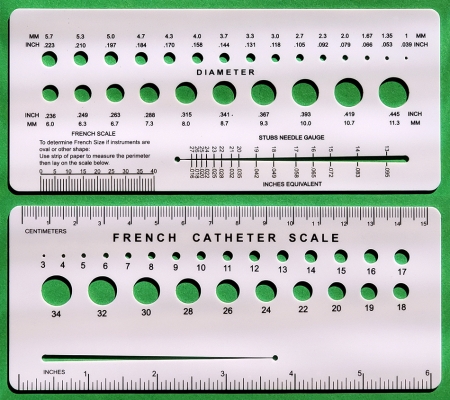Understanding French Scale (FR) Catheter Sizes: A Simple Guide

If you’ve ever come across medical catheters—whether in a hospital, clinic, or even a conversation about medical devices—you might have heard terms like “14 French” or “18 Fr.” These numbers refer to the French scale, a system used to measure the size of catheters and other tubular medical instruments. But what does it all mean? Let’s break it down in a way that’s easy to understand.
What Is the French Scale?
The French scale, often abbreviated as “Fr” or “F,” is a unit of measurement developed by a 19th-century French instrument maker named Joseph-Frédéric-Benoît Charrière. It’s used to indicate the outer diameter of catheters, endoscopes, and similar tools. Unlike inches or millimeters, which might seem more familiar, the French scale has its own unique system: 1 Fr equals 0.33 millimeters. So, a catheter labeled as 3 Fr has an outer diameter of about 1 mm, while a 12 Fr catheter is around 4 mm.
The key thing to remember is that the French scale measures the outside diameter, not the inside (or lumen) size. This is important because the thickness of the catheter wall can vary depending on its material or purpose, affecting how much fluid or material can pass through it.
Why Does Size Matter?
Catheters come in different sizes because they serve different purposes. A smaller catheter might be used for delicate procedures, like draining urine from a pediatric patient, while a larger one could be needed for something like clearing a blood clot or delivering thicker fluids. Here’s a quick rundown of common uses:
- Small sizes (6 Fr to 10 Fr): Often used for pediatric patients or in narrow vessels, like intravenous (IV) lines.
- Medium sizes (12 Fr to 18 Fr): Common for adult urinary catheters or feeding tubes.
- Larger sizes (20 Fr and up): Used for procedures requiring significant drainage, like chest tubes or in surgical settings.
Choosing the right size is a balancing act. Too small, and it might not do the job efficiently—too large, and it could cause discomfort or injury. That’s why healthcare providers carefully match the French size to the patient and procedure.
How to Read French Scale Sizes
You’ll often see catheter sizes written like “14 Fr” or “14F” on packaging or medical charts. Sometimes, manufacturers color-code the connectors to make it even easier to identify at a glance. For example:
- 10 Fr might be black.
- 14 Fr might be green.
- 18 Fr might be orange.
These colors aren’t universal, though, so it’s always best to double-check the number!
Fun Fact: It’s Not Just for Catheters
While the French scale is most famous for catheters, it’s also used for other medical tools like endoscopes or even some surgical instruments. Charrière’s system caught on because it was precise and consistent, making it a global standard in medicine.
A Quick Conversion Cheat Sheet
If you’re more comfortable with millimeters, here’s a simple way to convert:
- 3 Fr = 1 mm
- 6 Fr = 2 mm
- 12 Fr = 4 mm
- 18 Fr = 6 mm
- 30 Fr = 10 mm
Just multiply the French size by 0.33 to get the diameter in millimeters, or divide the millimeters by 0.33 to get the French size.
Why It’s Good to Know
Whether you’re a patient, caregiver, or just curious, understanding the French scale can demystify part of the medical world. It’s one of those small details that bridges the gap between technical jargon and practical knowledge. Next time you hear “16 French catheter,” you’ll know it’s about 5.3 mm wide—and you might even impress someone with that tidbit!
Have questions about catheters or the French scale? Feel free to leave a comment—I’d love to hear from you!

